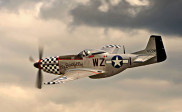Guide the Viewer’s Attention with Leading Lines
Leading lines in a composition are often used to steer the viewer’s attention around the image frame. These lines may be natural or man-made, deliberate or not, but they all influence how we look at a shot. We may be guided to linger at key areas in the photo, and we may also be directly led towards the subject which has been strategically highlighted by the leading lines.
Leading Lines Can Be Used to Help Tell a Story
In this photo below, the leading lines provided by the road begin with the little boy at the foreground of the frame, and directs our focus to the female figure following behind. The use of leading lines in this scene is very effective in telling a story. It shows us the distance between the two subjects, and makes us imagine their relationship and why one is so far away from the other.
Leading Lines Can Guide Our Attention towards the Image Foreground
Leading lines may guide our focus towards the front of the frame instead of the background. For example, in this photo, the flying V of the flock of birds is flying towards the direction of the camera, as evidenced by their increasing sizes. Also, they seem to form an arrow pointing to the bird at the lead, which becomes the point of focus. This is emphasized since the leading bird also seems larger than the other birds due to the perspective.
This same photo is a great example of how leading lines can be created by a pattern of similar objects. The birds form two natural converging lines that end with the leading bird. Other examples of leading lines formed by the repetition and placement of objects are a row of trees, a trail of footprints or a path made of stepping stones.
Leading Lines Do Not Have to Be Straight
Leading lines do not have to be perfectly straight in the image to provide an effect. They can be wavy, zigzagged, or curved as seen in this moody photo of train tracks that bend behind a rocky wall. Our eyes follow the curve until we see the little red light in the distance.
Leading Lines Can Be Subtle
Obvious lines in a photo can make it easy for the eyes to travel straight towards the subject. However, natural and subtle lines can be just as powerful even they are not as immediately visible. In this photo, the crooked line created by the receding waves and the trail of footprints on the sand are superb at directing our attention towards the golden sunset in the horizon. Yet, we get to appreciate the beauty of the beach before our attention rests on the subject in the distance.
When you use leading lines in your composition, remember that they have great influence in how our eyes travel around the photo. They can just as easily lead our attention away from the subject, particularly if the lines and the point of interest are not ideally composed in the frame. If used improperly, leading lines can damage the viewer’s perception of the image. Make sure the leading lines are enhancing your photo instead of causing a distraction.







